
 |
 |
||||||||
|
|
Lessons Menu - Lesson 1 - Lesson 2 - Lesson 3 - Lesson 4 - Lesson 5 - Lesson 6 - Lesson 7 - Lesson 8 |
| Lesson Plan 5 - Transportation STEAMBOATS ON THE SACRAMENTO RIVER |
download
lesson05.pdf |
|
|
OVERVIEW STUDENT OBJECTIVES CALIFORNIA HISTORY STANDARDS BACKGROUND ARTICLE 5 STUDENT ACTIVITY SHEET 5 AND KEY |
ADDITIONAL ITEMS AVAILABLE IN THIS LESSON PLAN: |
|
DOCUMENTS TO DISCUSS
(view online or print screen) |
||||
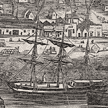 download pdf file |
1. View of Sacramento City, from the River [ca. 1850] Engraved illustration of Sacramento ca. early 1850's shows buildings in place of earlier tents. |
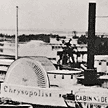 view large image |
2. Riverboat - (Central) Pacific Railroad depot [1868] At the dock of the California Company in Sacramento, with the steamer Chrysopolis. Also shows the Central Pacific Railroad depot. |
|
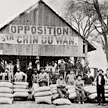 view large image |
3. John Laggas and crew of the steamer Varuna [1876] View of John Laggas and crew members of the Varuna sternwheeler, in front of warehouse at Sacramento waterfront, near M Street. |
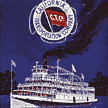 download pdf file |
4. Travel by Water
through the Heart of California [ca. 1915] Brochure of the California Transportation Company, with descriptions and timetables. |
|
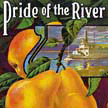 view large image |
5. Riverboat - Fruit label - Sacramento River - Locke [192?] Colorful fruit crate label advertising pears grown in the Sacramento Valley and shipped via steamer on the Sacramento River. |
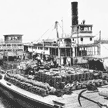 view large image |
6. Barges and steamboats on the Sacramento River [191-] View of the barge Alabama loaded with steel and iron for the Thomson-Diggs Co., at the dock. |
|
| 4. Solve a historical mystery |
|||
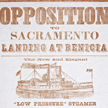 view large image |
Opposition to Sacramento Landing at Benicia [1860] Broadside advertising the departure of the Chrysopolis. |
Although all sources consulted for preparation of this lesson indicate that the Chrysopolis was operated by the California Steamship Navigation Company, this broadside presents it as an opposition steamer. Could the CSNC have been trying to fool passengers? At deadline time, no one had solved this mystery. Perhaps you can help by conducting further research. |
|
|
REFERENCES AND RESOURCES Cook, F. S. Steamboats in the valley. Volcano, CA: California Traveler, Inc. 1971. Dana, J. The Sacramento: River of gold. Holden, W. Sacramento: Excursions into its history and natural world. Hunt, R. D. and Arent, W.S. Oxcart to airplane. Los Angeles, CA: MacMullen, J. Paddle-wheel days in California. Stanford, CA: Stanford Wilkinson, P. and Pollard, M. Ideas that changed the world: Transportation. RELATED LINKS Steamboats.com Towns and Cities of the California Delta When Paddlewheeler Steamboats Pushed through Delta Waterways |
| Sacramento History Online © 2003 - 2004 | |